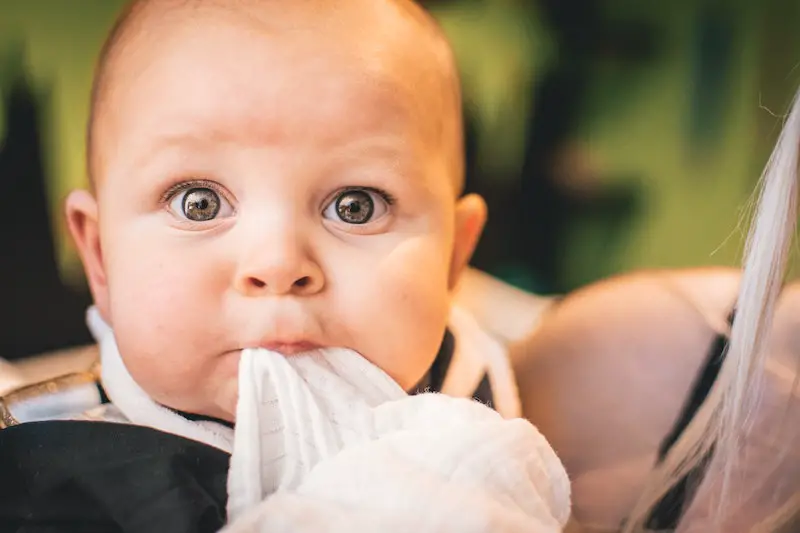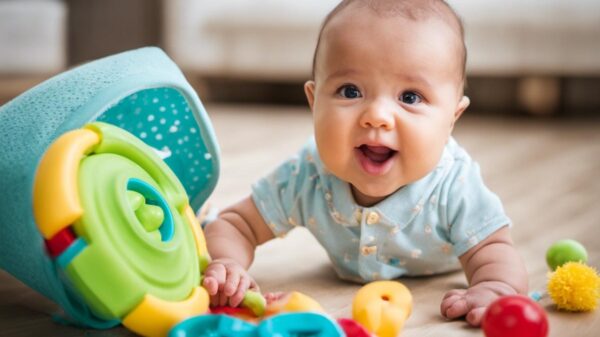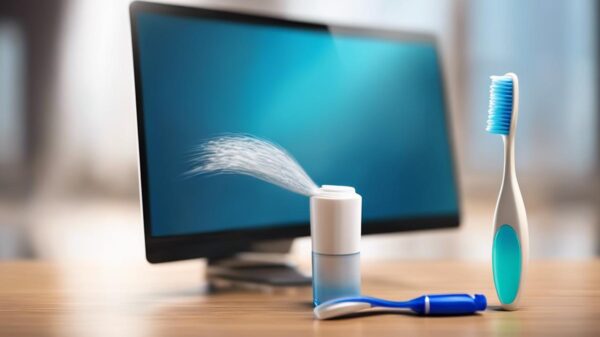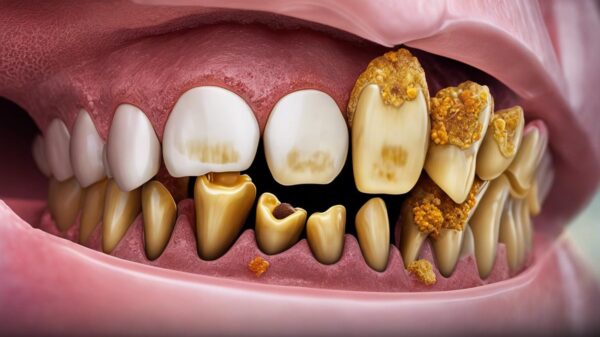When Do Most Babies Get Teeth?
As children grow up, they go through different stages at different times – some kids will develop slower than others, and vice versa. Many parents may question whether their children are growing at the right rate and developing properly, so it’s good to know some of the time frames for when they can expect something to happen. Both having baby teeth come in and losing them are good things to know, so I’ve collected information on what to expect.
When Do Most Babies Get Teeth? The dentists at Dental Associates of Rogersville say that most children will pop their first tooth around 6 months of age and lose their first tooth at 6 years old. Though both of these events can be very exciting as a sign of their growing up, they can also be a bit painful and uncomfortable.
Navigating all the changes your kids will go through can be a bit overwhelming, especially for first-time parents. In this article, we will go over the process of your kids growing and losing their teeth, and what you can do as parents to help them.
Tooth Development in Children
 Though there is a wide range of variability for when kids will develop and pop their first tooth, it typically happens between 6 and 12 months. However, they will experience “teething” long before this at around 3 months.
Though there is a wide range of variability for when kids will develop and pop their first tooth, it typically happens between 6 and 12 months. However, they will experience “teething” long before this at around 3 months.
Teething is a term that describes the age when children will put things in their mouths to try and massage their gums.
When kids go through teething, there are a few things parents can and will do to try and soothe their babies, as popping teeth can be quite painful. You will notice that your baby has started to teethe when they start to produce more drool and want to chew on everything.
They may also start to be fussy and have trouble sleeping. In some cases, the swollen gums can spike your baby’s temperature – talking with your doctor can help you find a medicine that will work to bring it down.
Rubbing your baby’s gums, giving them a cold teething ring to chew on, and medicine, if they’re particularly fussy, are the best ways to soothe during the teething stage.
The first teeth to erupt will often be the front, bottom teeth, followed soon after by the four front upper teeth. Molars, which are the back teeth, come in a little bit later. Most kids will have all 20 of their teeth by their third birthday.
Tooth Development and Eating
As your baby’s teeth begin to erupt, it will soon be time to start feeding them solid foods. Breastmilk, or formula, have nutrients that are necessary for their health, but as they get older, babies will need more nutrients to spur growth and development – which will be found in solid food.
Beyond nutrients, eating solid food also helps develop their teeth and jaws, introduces them to new textures and tastes, and prepares them for language development down the road.
The process of introducing new foods can be a bit nerve-racking because it’s a big step and there can be a lot of unknowns. You will start noticing that your baby is ready to begin eating solid foods when they have strong head and neck control, show interest in what you eat, and open their mouth when you offer them food on a spoon.
When you begin introducing solids, you will likely start with smooth, mashed, soft pieces of food before moving to minced and small, cut-up pieces of food. Presenting different foods is important because it will show you what the baby likes and doesn’t like.
You must always supervise your baby when they eat – choking incidents do happen. Be sure that they are still and not moving when eating and be sure to watch and make sure they are swallowing before giving them another bite.
Losing Baby Teeth: What You Need to Know
 Baby teeth begin to loosen and fall out starting around age 6. Most often, the first teeth to fall out will be the front top and front bottom teeth.
Baby teeth begin to loosen and fall out starting around age 6. Most often, the first teeth to fall out will be the front top and front bottom teeth.
Ever heard the saying “all I want for Christmas is my two front teeth”? Six to seven years of age is when you will see kids missing their teeth and having trouble talking.
Your child’s baby teeth usually won’t fall out until they are ready to be replaced by a permanent tooth. In some cases, kids may pull out teeth that are not loose.
For some kids, this is kind of fun and normal. No need to worry, as long as they can still eat and talk! Permanent teeth should come in right behind the falling out of the baby teeth – anywhere from a few days, to maybe a couple of weeks.
Once permanent teeth start coming in, you must reinforce proper oral health practices. You’ll want to make those teeth last as long as possible. There is a good chance, especially with regards to genetics, that your children will need to have some dental procedures like braces or Invisalign to straighten their permanent teeth when they come in. This is completely normal, but it can be very expensive.
Even though baby teeth fall out, you should still care for them as though they would be permanent. If teeth decay or fall out because of an accident, a permanent tooth could drift into that space and cause overcrowding or issues that will have to be fixed by braces.
How Long Does It Take for a Tooth to Come In?
When teething hits, you will likely be able to notice when a tooth is about to erupt, and you will be able to prepare for the others. It takes about 8 days for a tooth to pop – 4 days before (which will be fussy and hard for your baby) and 3 days after, where they may still be sore.
Babies like to put everything in their mouths and are still in a “sucking” phase. You can put a clean finger in your baby’s mouth and feel around and you will likely be able to tell if a tooth is about to come in.
How to Take Care of Baby Teeth
 Fluoride treatments in children are extremely important for the health of their teeth. As soon as your baby’s teeth start appearing, you should begin brushing their teeth with a small amount of toothpaste that contains fluoride. Be sure to brush them like you would your own – twice a day, thoroughly.
Fluoride treatments in children are extremely important for the health of their teeth. As soon as your baby’s teeth start appearing, you should begin brushing their teeth with a small amount of toothpaste that contains fluoride. Be sure to brush them like you would your own – twice a day, thoroughly.
The fluoride in toothpaste protects teeth by helping them get stronger and more resistant to acid, which helps reduce the risk of cavities and tooth decay.
Around age 3, your children will be able to spit more properly, so you can begin using a pea-sized amount of toothpaste when brushing. It will be a good idea that you continue to help them brush until they are about 5 or 6 and can do it on their own.
Swallowing Fluoride: Should You Be Worried?
If you are using the right amount of fluoride toothpaste when brushing your child’s teeth, you should not worry about them swallowing a little bit of it. The recommended amount is important for their teeth health and is safe if they were to swallow it.
Fluoride is technically a toxin, which is why there are warnings about consuming it. But, in moderation and using recommended amounts, it is not harmful. Most of the water we drink goes through a fluoride treatment that helps to minimize cavities and tooth decay.
Swallowing a large amount of fluoride can cause stomach pains and potential intestinal blockage. If there is a significant amount of fluoride swallowed, it could lead to convulsions and diarrhea. Though it can be dangerous, the likelihood of your child swallowing a significant amount to cause these symptoms is highly unlikely.
Talk With Your Dentist
We’ve talked about some of the common age ranges of when teeth will appear and start falling out, and while these may be “normal” ranges – you should not be worried if your child is developing at a different rate.
If for some reason, you are concerned or have questions, talking to your dentist and your doctor can help. They will tell you if there is anything to be concerned about and can even look to see if your child is on the verge of popping a tooth.
Fear of the dentist is another common experience for many people. When you start introducing your children to biannual dental visits, remind them of why you go to the dentist, help them see the importance, and make them feel more comfortable. Finding a good family dentist can also help your children feel at ease when they go.












